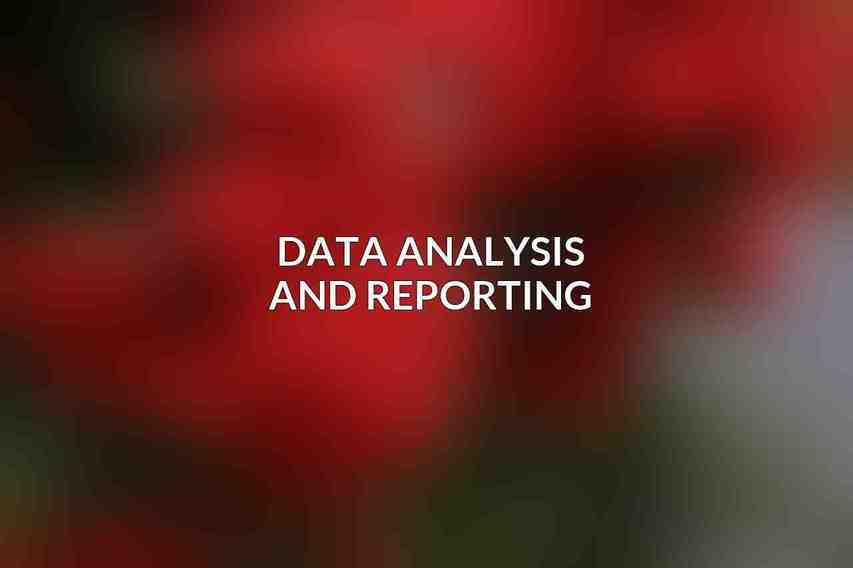Analytics plays a pivotal role in understanding consumer behavior, measuring campaign performance, and making data-driven decisions. Analytics refers to the systematic computational analysis of data or statistics, which provides valuable insights into various aspects of a business’s online presence. The importance of analytics in digital marketing cannot be overstated, as it enables marketers to track key metrics, optimize strategies, and enhance overall performance. By implementing analytics effectively, businesses can gain a competitive edge, improve ROI, and engage with their target audience more efficiently.
One of the primary benefits of implementing analytics for effective reporting is the ability to track and measure the performance of marketing efforts accurately. Analytics tools provide real-time data on website traffic, user interactions, conversion rates, and more, allowing marketers to evaluate the success of their campaigns swiftly. Moreover, analytics facilitates data-driven decision-making, enabling businesses to optimize their strategies based on concrete insights rather than intuition or guesswork.
Setting Up Analytics Tools
When it comes to setting up analytics tools, choosing the right platform is crucial for obtaining meaningful insights. Popular analytics tools in 2024 include:
| Analytics Tool | Description |
|---|---|
| Google Analytics | Offers comprehensive web analytics and reporting |
| Adobe Analytics | Provides advanced analytics and customer insights |
| Mixpanel | Focuses on event-based analytics for mobile apps |
Installing the analytics code is a fundamental step in the setup process. This can be done either through Google Tag Manager for a streamlined approach or via manual installation for more customized tracking requirements. Configuring basic settings within the analytics tool, such as website and property setup, defining goals and conversions, and creating filters and segments, is essential for collecting relevant data.
Implementing Analytics for Different Channels
Website Analytics
Website analytics involves measuring key metrics such as traffic sources, page views, bounce rates, and more to understand user behavior on the site. By analyzing this data, marketers can optimize website content, design, and functionality to improve conversion rates and enhance the overall user experience.
App Analytics
For mobile applications, analytics help track app downloads, user retention, and in-app actions to gauge the app’s performance. Monitoring app usage patterns and user engagement metrics enables businesses to make informed decisions on enhancing features and driving user engagement.
Social Media Analytics
Social media analytics tools allow marketers to evaluate the effectiveness of their social campaigns, track engagement metrics, and optimize their social media strategies for better reach and audience engagement. Measuring performance metrics like clicks, shares, and comments helps refine content strategy and enhance brand presence on social platforms. Learn more about Creating Impactful Reports for Marketing Decisions
Email Marketing Analytics
Email marketing analytics provide insights into open rates, click-through rates, conversion rates, and subscriber behavior. By analyzing these metrics, marketers can tailor their email campaigns for higher engagement and conversion rates, leading to improved campaign effectiveness and ROI.
Data Analysis and Reporting

Data analysis in analytics encompasses various stages, including data collection, storage, preprocessing, cleaning, visualization, and reporting. Understanding the different data types and metrics relevant to the business is essential for accurate analysis. Visualization tools help create intuitive dashboards and reports that facilitate easy interpretation of complex datasets, while identifying key performance indicators (KPIs) enables businesses to monitor their progress against set goals effectively.
Troubleshooting Common Issues

Despite the benefits of analytics, businesses may encounter common issues such as missing or inaccurate data and the lack of actionable insights. Troubleshooting these issues involves verifying tag installations, checking filter configurations, understanding data sampling methods, and ensuring data consistency and accuracy. To derive actionable insights, it’s crucial to define clear goals and KPIs, analyze data in context, and collaborate with stakeholders to gain diverse perspectives on data interpretation.
implementing analytics for effective reporting requires a systematic approach to setting up tools, analyzing data, and troubleshooting common issues. By following the key steps outlined in this guide, businesses can harness the power of analytics to drive informed decision-making, optimize marketing strategies, and enhance overall performance. Ongoing monitoring, optimization, and learning from analytics best practices are essential for staying competitive in the ever-evolving digital world of 2024. Embrace analytics, and unlock the potential of data-driven insights for your business success.
Frequently Asked Questions
What is the importance of implementing analytics for effective reporting?
Implementing analytics allows businesses to track and measure their performance, identify trends, make data-driven decisions, and improve overall efficiency. Find more on Top Analytics Tools for Marketers in 2024
What are some key steps in implementing analytics for effective reporting?
Key steps include defining objectives, selecting relevant KPIs, collecting and cleaning data, analyzing data, creating visualizations, and drawing insights for reporting.
How can businesses ensure the accuracy of data in their analytics reports?
To ensure data accuracy, businesses should regularly monitor and validate data sources, maintain data quality standards, and implement data governance policies.
What are some common challenges faced when implementing analytics for reporting?
Common challenges include data silos, lack of data quality, insufficient data literacy among employees, outdated tools, and difficulty in integrating data from different sources. Check this blog on Guide to Analyzing Social Media Metrics for Growth
How can businesses leverage analytics for effective reporting to drive strategic decision-making?
By using analytics for reporting, businesses can identify patterns, trends, and correlations in the data, which can help in making informed decisions, optimizing processes, and achieving business goals.

